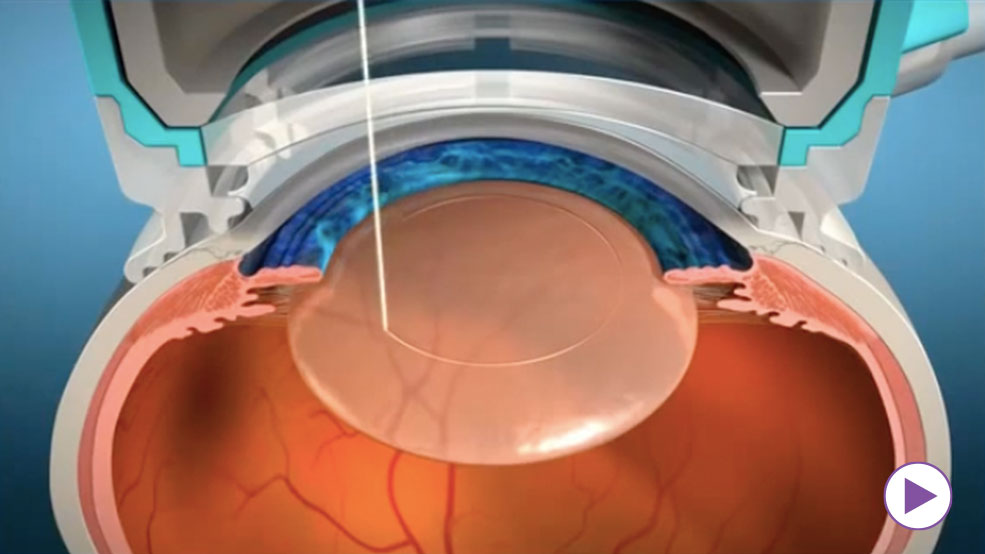When should I have cataract surgery?
As cataracts can form slowly over a long period of time, you may have a cataract without immediately recognizing it. If you, or someone you know has experienced one or more of the symptoms below, it might be caused by a cataract.
Talk to your eye care professional if you experience any of the following symptoms of cataracts:1

Cloudy vision
When you have a cataract, it can seem like you are looking through a foggy window. At first, only a small part of your vision is cloudy. But as the cataract grows over time, the cloudy area will get larger and your vision may become duller and blurrier.2

Difficulty with night vision
As cataracts get worse, they block more light from reaching the retina. This makes it harder to see and drive at night. You may also need more light for indoor activities such as reading.2

Light and glare sensitivity
Cataracts can make your eyes more sensitive to light. You may notice that indoor lights seem too bright and may have trouble seeing in bright sunlight.2

Halos around lights
When you have cataracts, lights may appear to have halos around them. You may also notice glare around streetlights and traffic lights, making it hard to drive at night.2

Colours appear faded
At first, colours may appear faded. Your vision may also start to have a yellowish-brown tinge. This is gradual at first but may progress to the point where you have trouble telling the difference between black, blue, and purple.2

Double vision in one eye
Cataracts can sometimes cause double vision, where you see two images of a single object at the same time. This occurs even when you have one eye open.2

Frequent changes in your glasses or contact lens prescription
You may need to change your glasses and contact lens prescriptions more frequently. Strangely, some people may even notice an improvement in their near vision and may no longer need their reading glasses for a while. This is sometimes called second sight and usually goes away as the cataract gets worse.2
If you are nearing 60 years of age or are older, an annual eye exam can help detect the early signs of a cataract developing. If you have any concerns about your vision or think you may have a cataract, don’t hesitate to book an appointment with your eye care professional.
You can start by talking about your vision with an eye care professional, who will examine your eyes to determine whether or not cataracts are causing your vision problems.

Your eye care professional is the only one who can advise you on all aspects of cataract treatment. The more informed you are, the more prepared you will be to take an active role in developing a plan that’s right for you and your lifestyle.
What happens during cataract surgery?
During cataract surgery, an ophthalmologist removes the cloudy natural lens from your eye (cataract) and replaces it with an intraocular lens (IOL).
Cataract surgery is a routine procedure that generally lasts less than 30 minutes.
The procedure generally involves the following steps:

A topical anaesthetic is applied to numb your eye(s).
A tiny incision is made in the cornea.
A specialized instrument is used to break up and remove the cataract.
A new intraocular lens (IOL) implant is inserted where the cataract once was.
You may be given an eye patch to use for a short time after the procedure.
Your new lens becomes a permanent part of your eye, just like the natural lens that you were born with. Once it’s in place, you won’t be able to see or feel it and it doesn’t need any special care.1
What can I expect during the recovery time?
Recovery from cataract surgery is usually very quick, with most patients returning to regular activities soon after surgery in non-complicated cases, after 24 hours, patients can return to most daily activities, with vision improving over time.12
You will need to use eye drops after the surgery. Be sure to follow your ophthalmologist’s instructions.
What are the risks?
Although cataract surgery is a common, effective, and relatively quick procedure, it has potential for complications as with any other surgery.1
Be sure to talk to your eye care professional ahead of your procedure to learn more about all of the risks associated with cataract surgery.
Over 4 million people have cataract surgery every year across European Union member states.13
Cataract surgery risks include:12
- Inflammation
- Infection
- Bleeding
- Swelling
- Retinal detachment
- Glaucoma
- Secondary cataract
- Loss of vision
The risk of complications increases if you have a pre-existing eye disease or a medical condition.12
References:
- National Eye Institute Staff. Facts About Cataract. National Eye Institute. September 2009. Available at: https://nei.nih.gov/health/cataract/cataract_facts. Accessed August 20, 2018.
- WebMD. Slideshow: a visual guide to cataracts. Available at: https://www.webmd.com/eye-health/cataracts/ss/slideshow-cataracts. Accessed August 13, 2018.
- Day AC, et al. Laser-assisted cataract surgery versus standard ultrasound phacoemulsification cataract surgery. Cochrane Database of Systematic Reviews. 2016; Issue 7. Art. No.: CD010735. DOI: 10.1002/14651858.CD010735.pub2.
- Nagy Z, et al. Initial clinical evaluation of an intraocular femtosecond laser in cataract surgery. J Refract Surg. 2009 Dec;25(12):1053-60.
- Alio JL. Cataract surgery with femtosecond lasers. Saudi Journal of Ophthalmology. 2011;25:219–223.
- Juhasz E, et al. Analysis of Planned and Postoperatively Measured Flap Thickness After LASIK Using the LenSx Multifunctional Femtosecond Laser System. J Refract Surg. 2014;3-(9):622-626.
- Yeoh R. Practical differences between 3 femtosecond phaco laser platforms. J Cataract Refract Surg. 2014 Mar;40(3):510.
- Alcon Data on File. Alcon-LenSx Engineering Report. ER15-011 Rev. B.
- Mastropasqua L, et al. Femtosecond Laser Versus Manual Clear corneal incision in cataract surgery. J Refract Surg. 2014;30(1):27-33.
- Alcon Data on File. LensX® Laser System Operator’s Manual. Date of Issue: December 2012. 80-001 Rev. G.
- Abell et al. Effect of femtosecond laser–assisted cataract surgery on the corneal endothelium. J Cataract Refract Surg. 2014;40:1777–1783.
- Mayo Clinic Staff. What you can expect [Cataract Surgery]. Mayo Clinic. July 30, 2013. Available at: http://www.mayoclinic.org/tests-procedures/cataract-surgery/basics/what-you-can-expect/prc-20012917. Accessed August 20, 2018.
- Eurostat. Surgical operations and procedures statistics. Available at: http://ec.europa.eu/eurostat/statistics-explained/index.php/Surgical_operations_and_procedures_statistics. Updated September 2017. Accessed June 14, 2018.
- Laser eye surgery hub. Cataract Statistics & Resources. Available at: https://www.lasereyesurgeryhub.co.uk/cataract-statistics/. Accessed August 20, 2018.











